“Beauty is value-positive, intrinsic and objectified.“ (George Santayana)
What makes us human?
What is beauty?
The combination of spirit and soul, of character and willingness to innovate, all combined in one body. The human being – every human being. Beauty is a consciously made value judgement and is subject to changes over time as well as geographical, religious and social foundations.
25,000 years ago, the Venus of Willendorf was considered the ideal of beauty; 3,000 years ago, in the Egyptian Empire, it was considered fashionable to be as slender as possible; in ancient Greece, a balance of proportions; in the Middle Ages, women were supposed to be androgynous; in the Renaissance, blond with a high forehead; in the Baroque period, on the other hand, plump bodies were the height of beauty. The changes in the ideal of beauty mostly happen through interaction with other cultures. Ideals of beauty are based on subjective reasons, while at the same time they claim universal correctness.
The people in Virgilius Moldovan’s work are shaped and depicted as they are visible in the artist’s eye. Moldovan’s figures are based on living models, he works classically with photographs, depicting what he sees – just a little larger. His models usually come to the exhibition openings and pose in front of their “superego”. They are happy to be portrayed and identify themselves in their mimics and poses. In contrast to this are portraits through the ages, which were prettier and more contemporary, freed from blemish. Moldovan’s people are natural.
Through the exaggeration, the enlargement of the human dimensions, the figures take on something respectful at first glance, for example the woman whirling a child through the air or the man with the turtle shell. On closer inspection, the sculptures are more real than we would often admit. Veins and arteries shimmer through the skin, bruises become visible as well as orange peel skin. All phenomena that we, the viewers, know from looking at ourselves, or from advertisements promoting remedies and surgical procedures to eliminate these blemishes.
Photoshop and social media filters have disconnected our perception from reality. Sometimes I think about how online influencers must feel when they get up in the morning and look in the mirror for the first time. When they face reality without filters. The embellished reality survives forever on the net, reality is a private matter. Moldovan’s people are pure, unadorned and therefore particularly beautiful.
After the “exciting” discovery by various art historians that the Venus of Willendorf was not a sex symbol after all, the artist Virgilius Moldovan presented his two sculptures in his solo show MORBUS WILLENDORF at the 12-14 contemporary in May 2022 in communication with the concepts of fertility symbol versus sex symbol, both women, both humans. In our society, naked women are apparently sex symbols per se, although this term dates back to the 20th century. The apparent liberation from this clichéd claw seems alienating and absurd. The great new insight ridiculous.
Is that why we have so many femicides in Austria, because women are at the mercy of sexualized violence? Because the Austrian image of women meanders between mother and sex symbol, without respect for the female human being? Because we still talk about people and women? The manifestations of sexualized violence range from lewd, intrusive looks, unwanted comments and touching, “dirty” jokes, sexist remarks to rape and sexual abuse. Resulting traumas weigh heavily on the women.
Virgilius Moldovan tries to refute precisely these prejudices and show the woman as a human being, naked as God created her, with all her dents and marks, the so-called flaws. They are strong, self-confident, autonomous women, without shame or fear. For me as a viewer, the emotional phenomenon was interesting. Julia, the woman with the mane of hair and the naked cat appears flirtatious and active. Her pose radiates a lust for life that is infectious. While I was looking at Julia, I felt a warm embrace from behind that made me turn around. Iris radiated a motherliness, a warmth and security that I would have loved to nestle into her. With his sculptures, Moldovan creates precisely the tension in the viewer that reveals and displays different sides of the human being. Julia was selected for a station exhibition on the theme of the human body in Emilia Romana by Alessandro Mescoli and will be exhibited in the Galleria d’arte contemporanea di Palazzo Ducale di Pavullo Nel Frignano in autumn 2023.
Since the group exhibition GUNST, in 12-14 contemporary Vienna in November 2021, Virgilius Moldovan has been in the context of feminist art. This approach popped up for the first time among the visitors at the opening. Women felt liberated and affirmed by his depictions to show what is. The artist and founder of the feminist Centre Pompadour in Picardy bought the LADY AT THE MORNING TOILETTE to install as a receptionist in her château.
With curlers on her head and a subtle smile, she peers into an imaginary mirror and presents herself as she is: beautiful and proud of it. Moldovan does not specialize in women, but in the human being per se. At the Albertina in Vienna, a work by Moldovan is presented as part of the exhibition Warhol, Rauschenberg, Smith. THE HAND OF GOD, 2014, was purchased by the Albertina. Moldovan is exhibited at the Albertina with Warhol, Rauschenberg, Smith, Kandl, Okun, it seems to be a show of acquisitions and donations. Neither the title nor the exhibition is explained and on the Albertina website one also searches in vain for this show.
I contextualized THE HAND OF GOD in my travelling exhibition WITTGENSTEIN, presented at Art Quarter Budapest in February 2020 by Krizstian Kuckla. The head is pressed down by a hand, the male face painfully distorted. In Budapest, the artists and I curatorially related to the period of World War 1 and the resulting Tractatus Logico Philosophicus. Crushed between war, doubt and faith, the writing of the Tractatus Logico Philosophicus was Wittgenstein’s intellectual salvation and a paradigm shift in modern philosophy. For me, the crushing hand symbolizes the burden of conventions with which Wittgenstein was often on a confrontation course, but also the squeezing out of new philosophical approaches.
“About my technique: I try to do it the way I learned it. I don’t want to blow anything up, nor do I want revolutions. I don’t have any ideas to transmit either, but I follow a path where I come across realities and try to understand them, or rather to appropriate them, on a sensual level. Nothing causal, nothing moral. I am happy when people walk the path with me and make up their own minds about it. I am aware that I must have no claim to that.” (Virgilius Moldovan)
In Moldovan’s sculptures, one notices the craftsmanship that has unfortunately become very rare today. The sculptures are built up with wire, wood and clay, silicone casts are made and the fine veins and skin structures are painted on with pigments. The final silicone layer is applied on top, which is why the bodies appear so fleshy.
Virgilius Moldovan lives and works in Vienna and Brasov, collaborates with the Zero Gallery in Rotterdam, is represented at the Albertina, Essl Museum and Centre Pompadour, is a member of the gallery 12-14 contemporary and exhibits internationally.
POSTED BY
Denise Parizek
Denise is art historian and curator. She directs Schleifmuehlgasse 12-14 in Vienna, where for over 5 years she has been curating international projects....
12-14.org

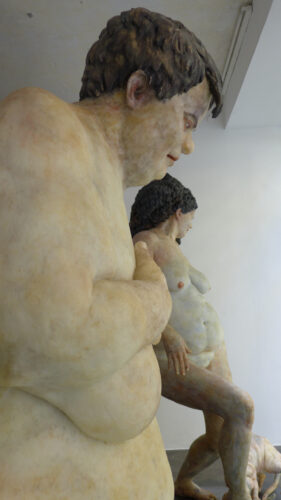
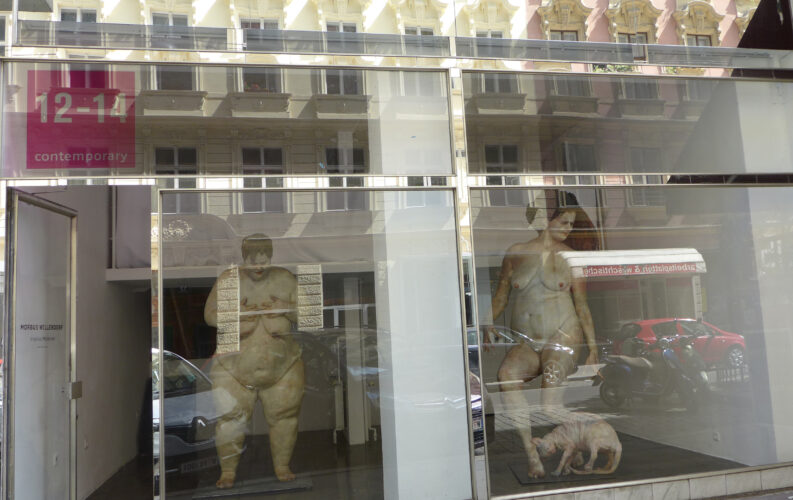
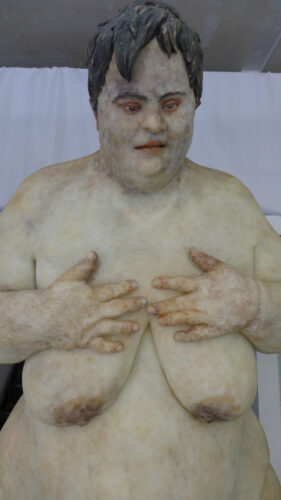
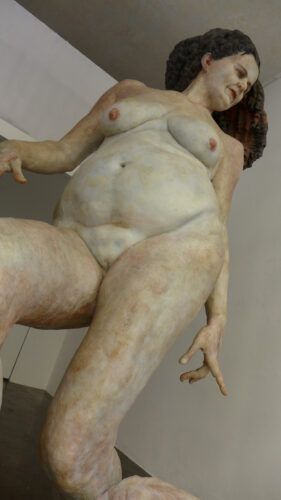
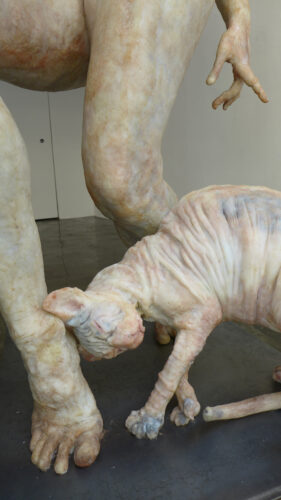
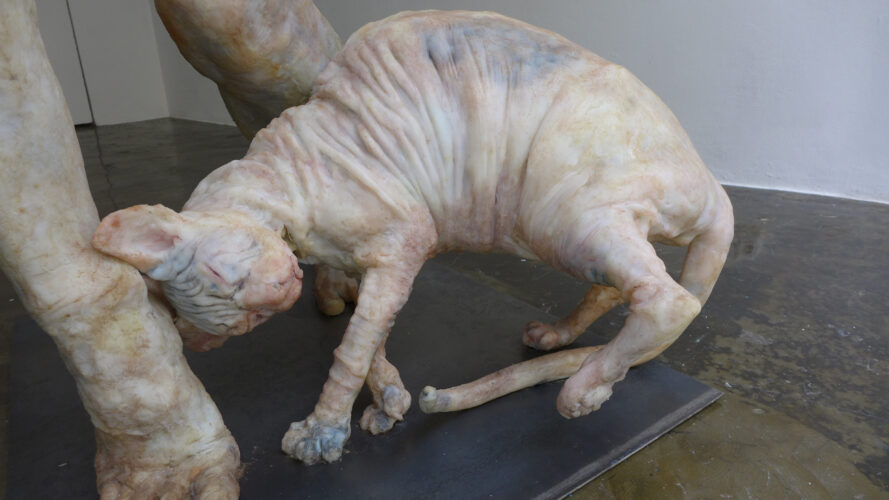
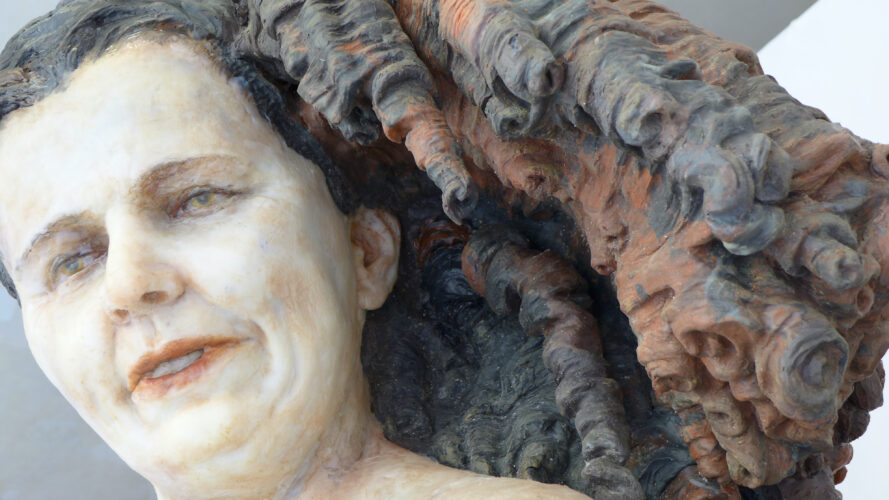
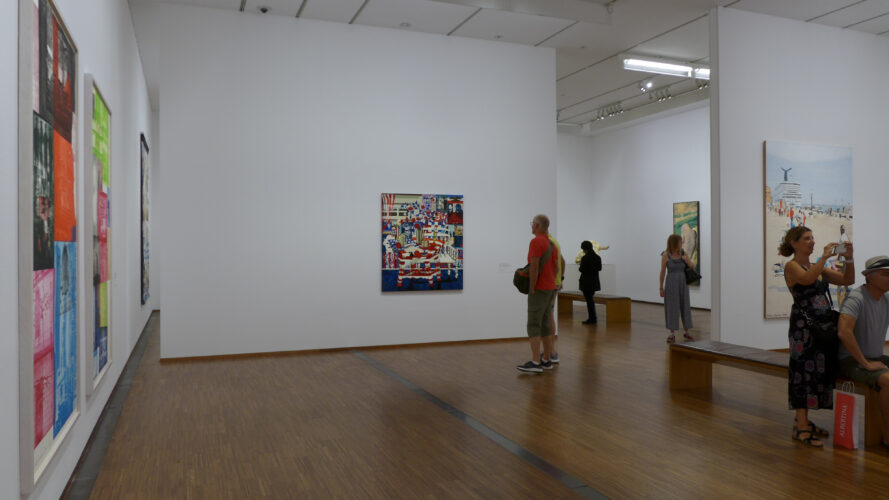
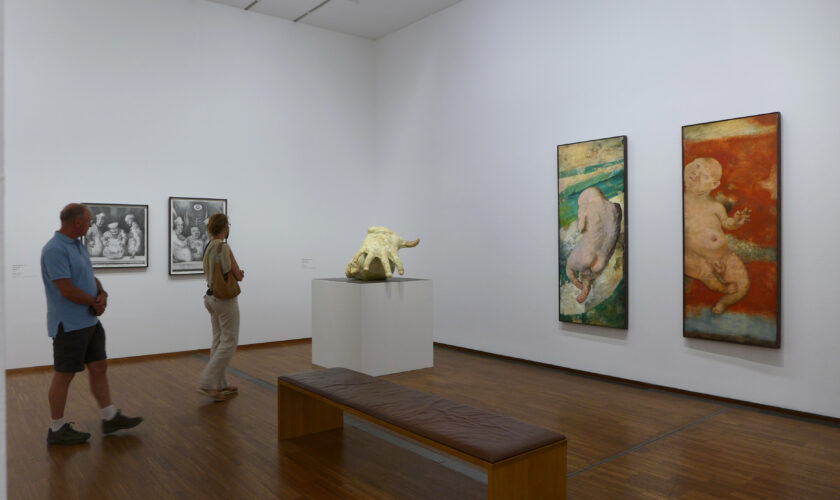
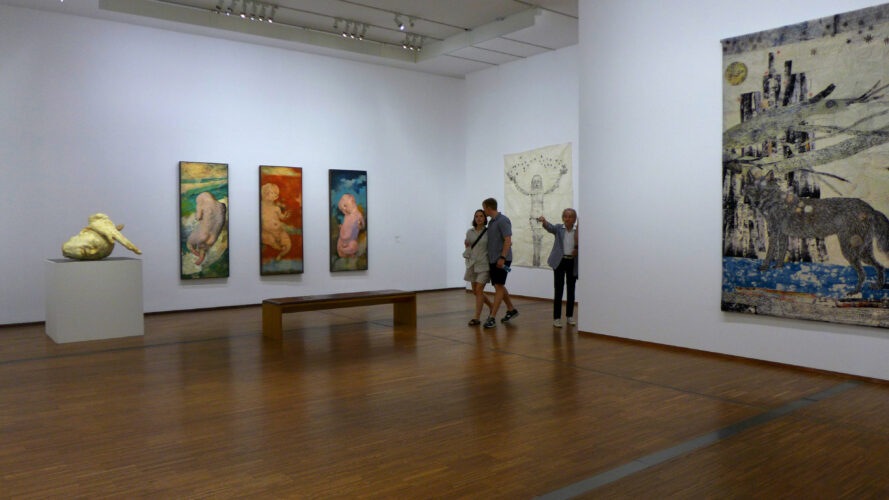
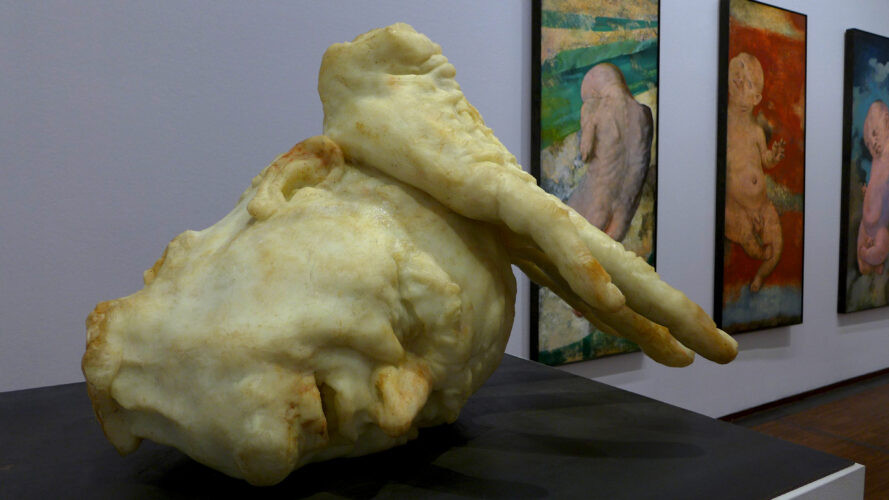
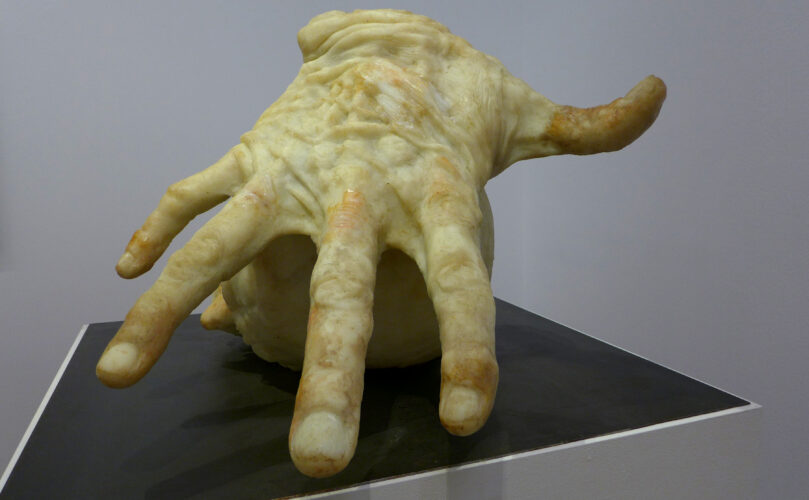
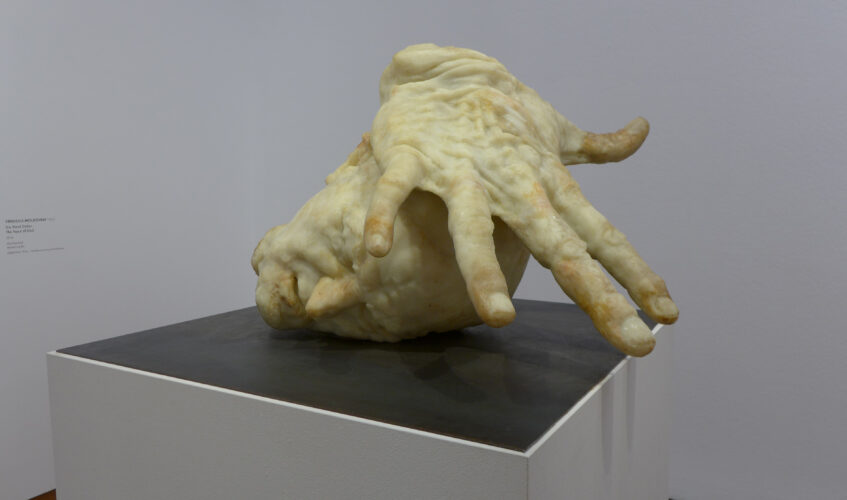
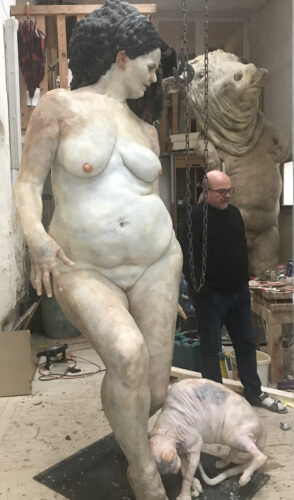
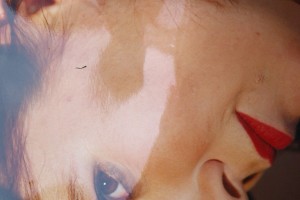
1 Comment
hi there, thanx for naming Centre Pompadour. by the way, we are the first and only European feminist residency.
www. centrepompadour.com
with all the feminist best
michaela spiegel